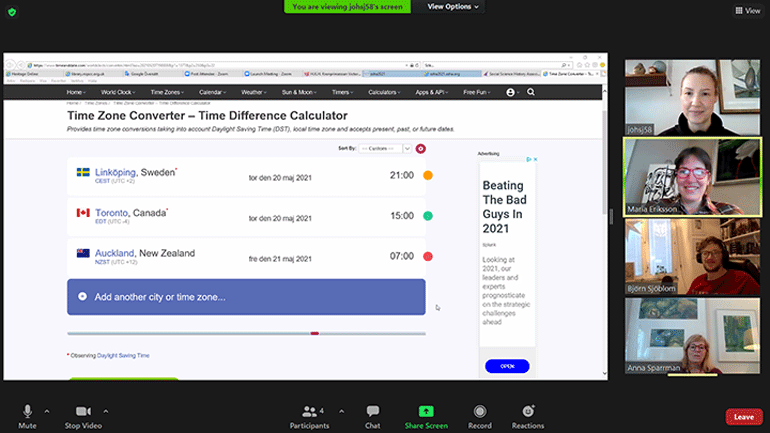Children's Cultural Heritage: The visual voices of the archive
This research project allows children’s visual and verbal expression to contribute to the digitisation of Swedish cultural heritage.

Image: The research group planning a Zoom meeting with the Advisory Board, members of which are based in New Zealand, Finland, Sweden as well as Canada.
The research project Children’s Cultural Heritage focuses on children as producersof cultural heritage. Adopting a child perspective, the voices of children, both visual and verbal, can be heard and contribute to the digitisation of Swedish cultural heritage. Researchers work with the Swedish Archive of Children’s Drawings (SBBA), a unique children’s heritage archive containing some 650,000 drawings by children dating from the eighteenth century until the present day. This is a political project in as much as children are an underrepresented group within Swedish cultural heritage: the study’s focus on the voices of children therefore represents a shift in approach.
From a theoretical standpoint, the project adopts a critical perspective to cultural heritage studies, child studies and visual culture. Among other things, project member Maria Eriksson of Konstfack will be documenting and analysing children’s online visual narratives via social media apps such as TikTok and Snapchat. Despite the popular notion that anything published on the internet will “remain their forever”, without systematic documentation many of the visual representations left by children will disappear.
Contact person at Konstfack: Maria Eriksson, senior lecturer at the Department of Visual Arts and Sloyd Education, Konstfack.
Project manager: Anna Sparrman, professor at the Department of Thematic Studies, Linköping University.
Additional researchers: Johanna Sjöberg, Pål Aarsand, Alex Orrmalm Makii and collaborator Karin Isaksson, archivist at the SBBA.
Funding: Swedish Research Council; Riksbankens Jubileumsfond; Royal Swedish Academy of Letters, History and Antiquities
Project period: 2021–2024
Konstfack participated in the project during 2021.
The project is part of DIGIARV research programme.